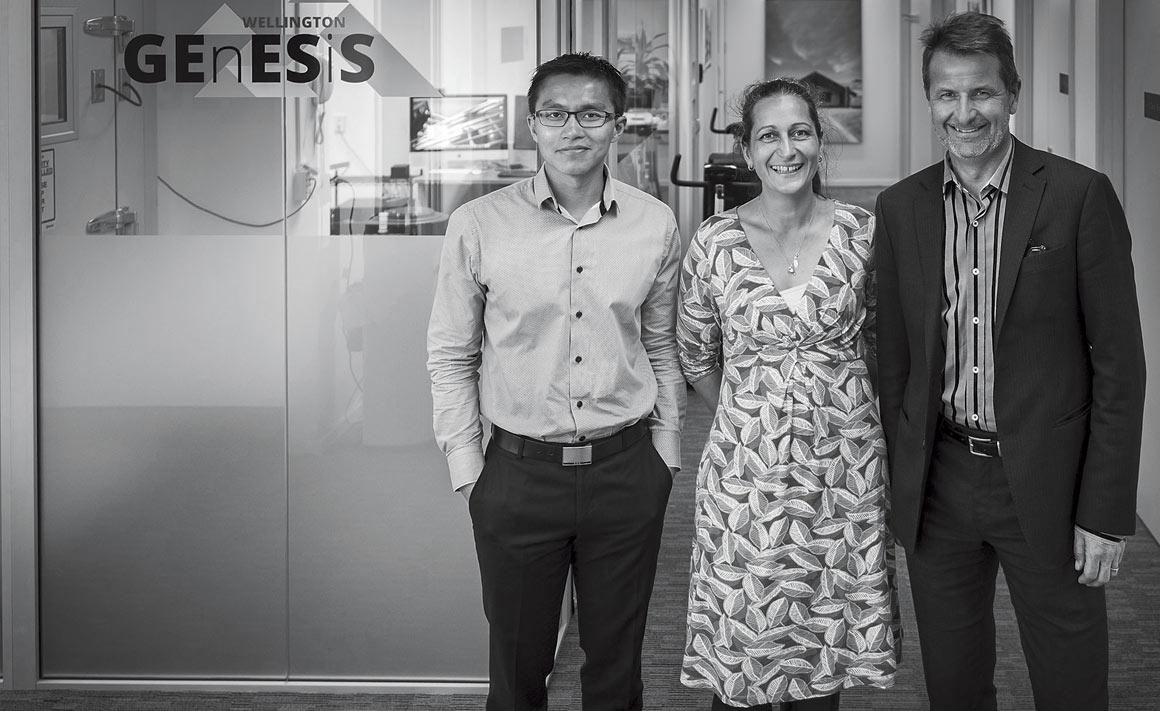
The Centre for Translational Physiology at the University of Otago, Wellington, is forging new links between a diverse group of academics and clinicians. Together they are working on novel solutions for complex conditions such as diabetes, obesity and stroke.
The Centre for Translational Physiology (CTP) provides academics and clinicians with the world-class infrastructure needed to lead research initiatives at the forefront of their fields. The integration on a single site of a state-of-the-art human physiology laboratory, a DXA scanner, clinic rooms including a custom-designed children's room and the GEnESiS suite (Global Energetics and Environmental Simulation) is a New Zealand first.
Director Associate Professor Shieak Tzeng says the CTP represents the huge gains to be made by working collaboratively to support infrastructure development. “We have demonstrated the tangible benefits of breaking away from a more traditional discipline-specific approach.”
He says the development of the physical space, the GEnESiS suite, the DXA scanner and the equipment all represent the combined efforts of a huge number of people wanting to pool ideas and resources to develop something unique – something to enhance and integrate the depth of research talent in Wellington.
“Although the CTP has only recently been completed, the successes we've already had in terms of external grant funding completely vindicate the approach we've taken to develop a shared resource here at UOW [University of Otago, Wellington].”
Tzeng believes the co-location of the University with the CCDHB Wellington Regional Hospital is another strength of the CTP.
“We've developed a space where clinicians and other health-care workers can meet, discuss ideas and work in partnership with academics to explore clinically important questions.”
He believes that this will ensure that research will continue to be driven by the problems faced by patients and their clinicians.
“This, to me, is the basis of translational research: clinical problems informing research questions; research data feeding back into the clinical space to improve our understanding of disease and helping to develop new therapeutic options.”
The slow translation of knowledge from research to clinical space has long been acknowledged as a significant problem, slowing the advance of medical progress. Initiatives like the CTP, based on clinical-academic partnership, mean that advances in knowledge are more likely to drive rapid improvements in clinical care.
Tzeng is also keen to highlight the importance of the broader research community the CTP operates within.
“Collaboration is absolutely integral to what we do and to the success of the CTP,” he says. “We co-supervise students and have a wide range of projects and grants with our partner institutions that bring in expertise such as computational physics and bioengineering.
“Developing and maintaining working links with leading academics at places like Victoria University of Wellington, the Malaghan Institute and Callaghan Innovation really widens the scope of our research capability and, again, breaks away from the more traditional notions of biomedical research,” he says.
Of all the resources available in the CTP, Tzeng says, it is GeNESiS that really is the game changer in terms of what can be accomplished. “We can simulate all kinds of environmental stressors such as extremes of heat, cold, humidity and altitude. We can recreate some of the most inhospitable places on earth and study the way our bodies adapt.”
Intriguingly, this isn't just of interest to would-be mountaineers. Academics in the CTP are using these environmental stressors to understand the basic mechanisms that regulate, among other things, energy consumption and cardiovascular risk.
“For example, we know that many environmental factors like ambient temperatures affect how much energy a person is using,” Tzeng explains. “A small reduction in ambient temperature can stimulate additional energy expenditure, opening up the possibility of environmental related obesity interventions.
“We also know that rates of cardiovascular incidents increase during the warmest and coolest periods of the year, but currently have no physiologically robust explanation for this.
"Using GEnESiS we can start to unravel these associations and begin to understand better the complex interactions our bodies have with their environment.”
The groups working within the CTP are well established in their own right and represent a diverse range of medical specialities and research interests.
“We have teams focusing on diabetes and obesity, cardiovascular disease such as stroke and hypertension, to groups focusing on clinical neonatal and intensive care populations. We believe, though, that this diversity is a particular strength of the CTP. When you have groups working together like this it's soon apparent that there are more points of commonality than points of difference. Recognising the synergy between people and providing the infrastructure where these ideas can flourish is really what the CTP is all about.
“We have world-class people here; now we have a world-class facility for them to really flourish and achieve some great health gains.”
